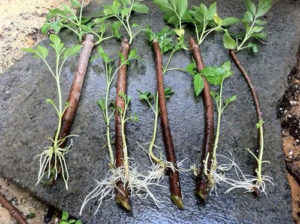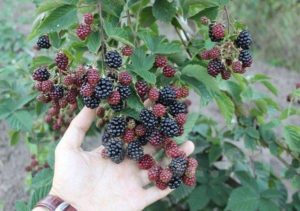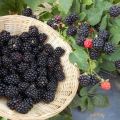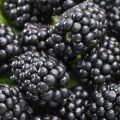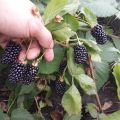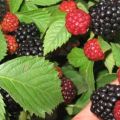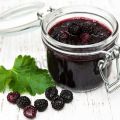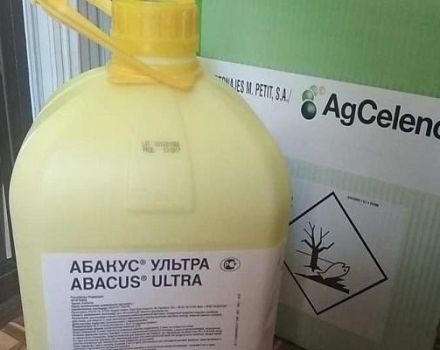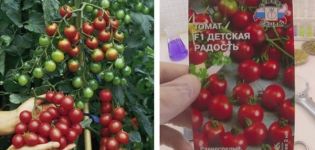Description and varieties of blackberry Thornfree, cultivation and care, formation of a bush
Blackberries of the Thornfree variety were one of the first to appear on the domestic markets. It was grown by both amateur summer residents and industrialists. The variety has won the love of summer residents around the world thanks to its delicious juicy berries.
Thornfree Blackberry Breeding History
Thornfree was developed in 1966 in the United States in Maryland. The hybrid became one of the first thornless berry varieties that breeders managed to get. The hybrid is intended for cultivation on an industrial scale.
Advantages and disadvantages of the variety
The benefits of Thornfrey Blackberry include:
- Lack of thorns on the bushes.
- The fruit is sweet and juicy, with a slight acidity and delicate aroma.
- High productivity.
- The bushes do not take long to leave.
- Immunity to diseases and insects.
- Berries do not crumple during long transportation.
The disadvantages of the thornless variety include the need for planting in open sunny areas. If a plant blackberries in shade or partial shade, the berries become watery and sour.
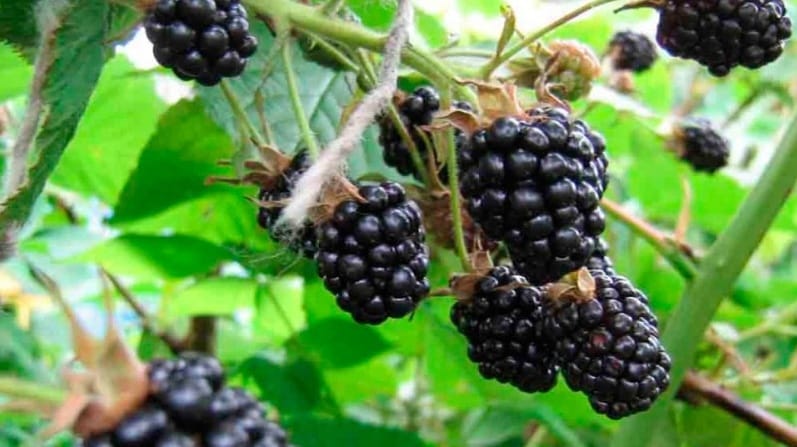
External description
Before choosing a hybrid of blackberries, they study the features of the bush, shoots, characteristics of the fruit, as well as the root system.
Bush and shoots
The bush is of the semi-straight type. Needs support. The shoots are thick, on average 3-5 cm, rich green shade. Faceted at the base, without thorns.
Fruit
Ripe berries with a rich black and burgundy hue. At the stage of full maturity, they are easily separated from the stalk. Berry weight is 5-7 g. Length up to 4 cm. Productivity reaches up to 30 kg without regular maintenance. One brush can contain up to 30 berries.

Root system
The rhizome of the shrub is well developed, so blackberries can do without watering for a long time.
Characteristics
Important characteristics of any variety are winter hardiness, disease resistance, yield and a number of other parameters.
Suitable region and climate
Thornfrey blackberry does not tolerate severe frosts, therefore it is recommended to plant it in warm regions or areas with a temperate climate, as well as in the Volga region. In the north, blackberries will not take root.

Disease and pest resistance
Thornfrey is characterized by immunity to stem cancer and anthracnose. But if you do not take care of the bushes, the immunity of the blackberry alone will not be enough.
Terms and indicators of productivity
The yield of this blackberry variety is above average. Up to 30 kg are harvested from one bush. Fruiting is stable. The first ripe berries appear on the bushes in August.
Fruiting continues until the last decade of September.
Where are berries used?
Ripe blackberries are suitable for fresh consumption. This variety has sweet and juicy fruits. Also, blackberries are suitable for making jams, preserves, confiture. You can freeze the berries for the winter or grind them with sugar.

Reproduction of culture
The easiest way to reproduce is by green cuttings. With this method, you can get a fairly large amount of planting material, since green cuttings quickly take root in a new place.
For reproduction in the summer, young shoots are cut off. Then they are cut into cuttings. Only one leaf is left on each handle. The bottom two are completely cut off. A stalk is placed in containers with soil so that the buds from the cut leaves are in the ground. Remove containers in a dark place and water regularly. After 14 days, the roots should appear. After a month, the cuttings are planted in the soil.
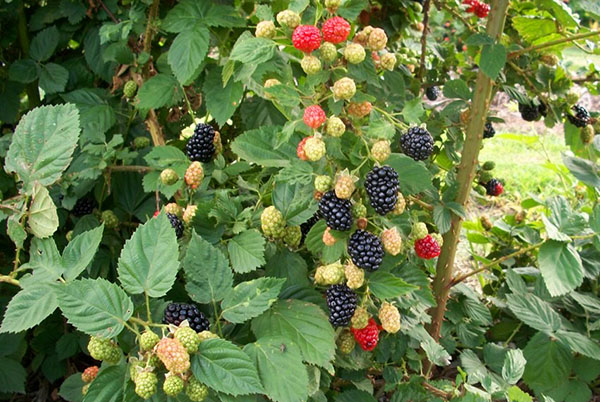
Landing rules
Further yield depends on the correct planting of seedlings.
Optimal timing
It is recommended to plant blackberries in the spring, in the second decade of April - early May. It is undesirable to plant seedlings in the fall.
Choosing the right place
In the central regions and the Volga region, Thornfree is planted in open sunny areas. In the southern regions - in partial shade, since the sun's rays can burn the leaves.

Required composition and preparation of soil
Suitable for planting light fertile soil rich in nutrients. The acidity is neutral or low. It is undesirable to plant blackberries where raspberries used to grow. They begin to prepare the soil in the fall. Manure, superphosphate and wood ash are added to the soil.
Selection of seedlings
Healthy seedlings with a well-developed root system are suitable for planting. The spines must not be damaged. The stems are firm, not dry.
Algorithm and technology of landing
Dig a hole in the prepared soil. Carefully place the seedling in it and bury it with soil. Then tamp near the stem and pour abundantly with warm water.
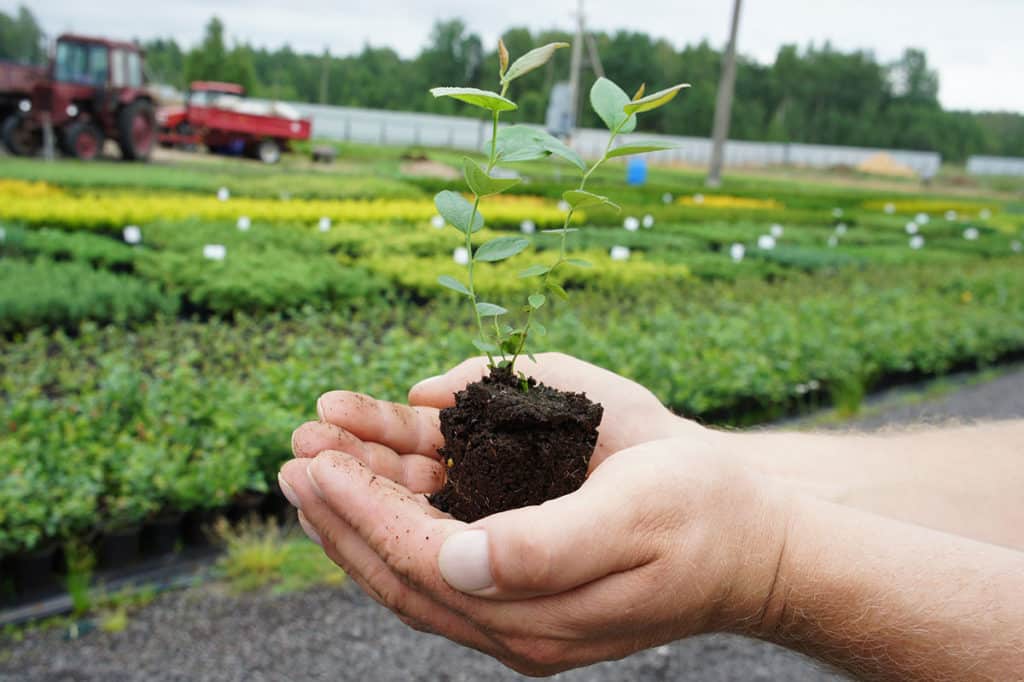
Blackberry care
Growing blackberries is a simple process. If you devote time to agricultural technology, the yield will always be at its best.
Irrigation features
The bushes are abundantly watered before flowering and during the formation of ovaries. Then, during fruiting, watering is stopped. Before winter comes, the blackberries should be watered again abundantly.
Fertilizer
In the spring, the bushes are watered with urea. In June, potash fertilizers are applied to the soil. When the formation of ovaries begins, the plant is fed with liquid organic fertilizers. In the fall, after digging up the soil, superphosphate is added.
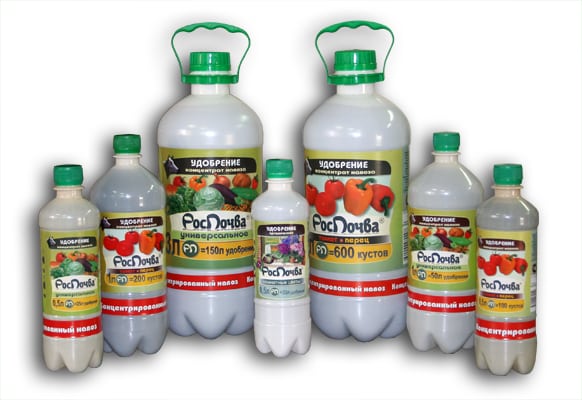
Trimming and shaping
For the Thornfrey variety, one-sided formation is used. Young shoots are directed in one direction, and old ones in the other. With this type of formation, you need to tie the bushes to high trellises.
If it is not possible to tie the bushes to high trellises, you should pinch the young shoots after they reach a length of 60 cm.
New shoots grow from these sinuses. They are pinched when they reach a length of 50 cm.This method is suitable for the southern regions, since it will be problematic to bend the bushes towards winter due to the thickness of the stems.

Garter bushes
The easiest way to tie up is to set up several posts with a wire tied to them. This method is universal and suitable for all growing regions.
Seasonal processing
In the fall, it is worth digging up the soil in order to destroy harmful insects that winter in the ground. In the spring, the bushes are sprayed with a 3% solution of copper sulfate or Bordeaux liquid. These products protect blackberries from diseases and insects. If necessary, the treatment with these agents can be repeated throughout the season.
How to shelter for the winter
In autumn, old shoots are cut off. They are burned away from the summer cottage. The young are removed from the trellises and laid on the ground. Then they cover. Before bending the bushes, it is advisable to lay straw or boards on the soil. In the southern regions, the bushes do not need to be covered for the winter. They begin to cover the plants in the central part immediately after the first frost. If the weather in the region is unpredictable, it is possible earlier.
